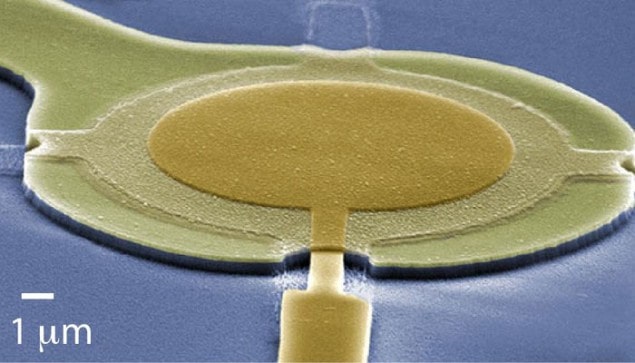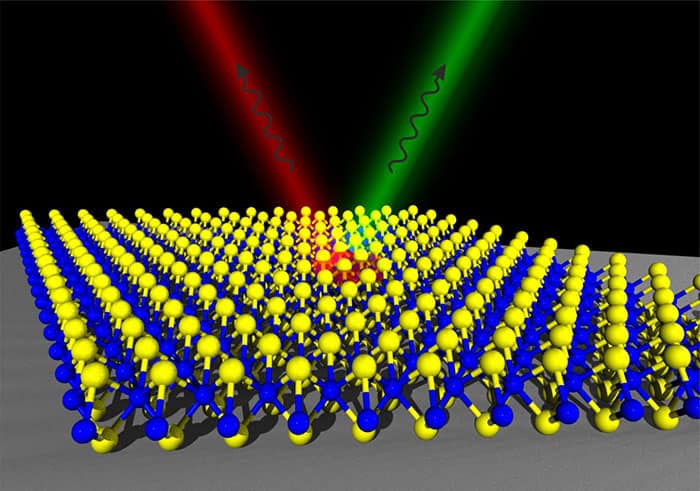Flash Physics is our daily pick of the latest need-to-know developments from the global physics community selected by Physics World‘s team of editors and reporters

New microwave detector approaches the quantum limit
A new and extremely precise way of amplifying and measuring tiny microwave signals has been unveiled by physicists at Aalto University and the University of Jyväskylä in Finland. Mika Sillanpää, Tero Heikkilä and colleagues created their detector by combining a micron-sized mechanical resonator resembling a drum with two superconducting microwave cavities. The device is able to amplify a very weak microwave signal with a gain of 41 dB – a factor of about 12,500 – while only adding about four quanta of noise to the signal. This is close to the minimum amount of noise possible (the standard quantum limit), which is half a quanta of noise. As well as being able to amplify very weak signals so that they can be measured, the technique could be used in quantum-information systems in which quantum bits of information (qubits) are encoded into microwave signals. Another important feature of the new technology is that it can convert signals from one microwave frequency to another. Writing in Physical Review X, the team suggest that this could be useful for developing quantum-information systems that are based on several different qubit technologies.
Computer simulations shed light on planetary rings
A series of computer simulations done by scientists in Japan and France provide important insights into how the rings around Saturn and other planets formed – and why the composition of Saturn’s rings is different to that of the rings of Neptune and Uranus. Ryuki Hyodo and colleagues at Kobe University, the University of Paris Diderot and the Tokyo Institute of Technology focussed on the “late heavy bombardment” era of the solar system. This happened about four-billion years ago and is thought to have involved the inward migration of thousands of Pluto-sized objects from the outer solar system. The team first calculated the probability that some of these objects would pass close enough to Jupiter, Saturn, Uranus and Neptune such that they would be broken up by tidal forces. The researchers found that enough fragments would be created and then captured by the giant planets to account for the current rings of Saturn and Uranus. Simulations also revealed that these fragments – some of which would be several kilometres in size – would break up as they orbit the planets to become the circular rings of much smaller objects seen today. The simulations offer a suggestion as to why Saturn’s rings are made mostly of ice, whereas the rings of Uranus and Neptune contain much more rock. This, they write in Icarus, is because Saturn is less dense than Uranus and Neptune and therefore the tidal forces it exerted on the Pluto-like objects is weaker. As a result, Saturn’s gravity was only able to chip away at the ice on the surface of the passing objects whilst Uranus and Neptune were able to break up the underlying rock.
Transition-metal monolayer emits photon pairs

A 2D monolayer of transition metal dichalcogenides (TMDC) can be used to generate pairs of photons, say researchers at the Julius-Maximilians-Universität Würzburg in Germany. TMDCs behave like semiconductors and are often used to make ultra-small and energy-efficient chips. Christian Schneider, Sven Höfling and colleagues produced monolayers of tungsten diselenide by using a piece of tape to peel off thin layers from a multi-layer film of the TMDC. This involved repeatedly peeling the film so that thinner and thinner layers are made until the material on the tape is only one-atomic-layer thick. This layer is then cooled down to a temperature just above absolute zero and it is then excited with a laser, causing it to emit single protons under specific conditions. “We were now able to show that a specific type of excitement produces not one but exactly two photons,” says Schneider. “The light particles are generated in pairs so to speak.” Two-photon sources are of interest to those carrying out quantum cryptography and other such protocols that involve entanglement. The research is described in Nature Communications.
- You can find all our daily Flash Physics posts in the website’s news section, as well as on Twitter and Facebook using #FlashPhysics. Tune in to physicsworld.com later today to read today’s extensive news story on Ising machines.



